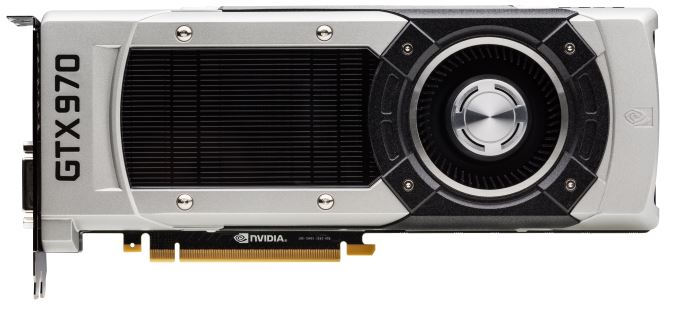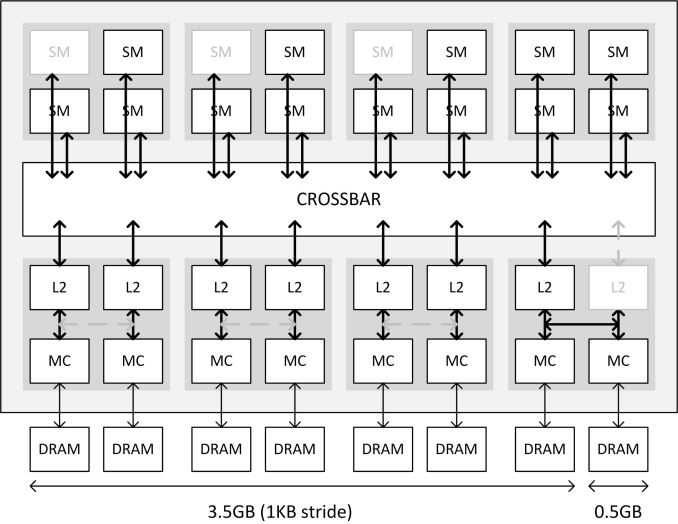Update: NVIDIA GeForce GTX 970 Settlement Claims Website Now Open
by Ryan Smith on September 12, 2016 9:30 AM EST
Update 09/12: Bringing this back up, over the weekend the website to submit settlement claims went up. Owners of GTX 970s who purchased the card between its launch and August 24th of this year can participate in the settlement in order to receive $30 per card. The settlement itself has not yet been approved by the courts, but is expected to be approved in December.
Interestingly, there is no damage cap in the settlement, so all participants will receive a fixed $30 per card regardless of the price paid or the number of claimants. Meanwhile the proposed attorney fees total $1.3 million.
Original: 07/29
Word comes from Top Class Actions (via The Tech Report) that NVIDIA will soon be settling a series of proposed class action lawsuits brought against the company regarding the GeForce GTX 970. Under the preliminary settlement, United States residents who purchased GeForce GTX 970 cards would be able to claim a $30 settlement in return for dropping further litigation against the company. With the GTX 970 having launched at $329, this amounts to a de facto 9% rebate on the card.
The class action suits in question were brought against the company almost immediately after NVIDIA made the important (and more than a bit painful) disclosure that the initially published specifications for the GTX 970 were wrong. Specifically, that the card had an unusual memory crossbar organization where one ROP/L2 partition was disabled, giving the card only 56 ROPs instead of 64. Furthermore, this meant that the last 512MB of the standard 4GB of VRAM could not be accessed in a contiguous manner, impacting how it could be used. To that end, as the Top Class Actions article notes, the $30 settlement “was calculated to represent a portion of the cost of the storage and performance capabilities the consumers thought they were obtaining in the purchase of the product.”
With that said, at this point the settlement itself has yet to be approved by the court, and signups are not yet available. Assuming it is approved, I’d expect that signups will be made available shortly thereafter.
Source: Top Class Actions (via The Tech Report)











105 Comments
View All Comments
Eden-K121D - Friday, July 29, 2016 - link
Ha! They deserved itWreckage - Friday, July 29, 2016 - link
AMD is next. Currently for Bulldozer and then for the 480 power issue.Creig - Friday, July 29, 2016 - link
Keep dreaming, Wreckage/Prime1.Wreckage - Friday, July 29, 2016 - link
Feel free to go to a website called google and lookup the Bulldozer lawsuit. Before you attack someone you should at least know what you are talking about.Drumsticks - Sunday, July 31, 2016 - link
The bulldozer lawsuit is stupid. Sharing a FP unit is certainly unconventional, but traditional x86 CPUs didn't even HAVE floating point units. I'm not sure if there's anything else they're complaining about, but that's all i remember from when I originally read about it.rtho782 - Tuesday, September 13, 2016 - link
In order to go back to x86 CPUs that don't have a FP unit, you have to go back to the 386, or maybe the 486SX, which had the FP unit disabled. You're stretching.EVERY x86-64 CPU ever made except bulldozer, has an FP unit per core.
CiccioB - Tuesday, September 13, 2016 - link
That means nothing. AMD gave right specifications of the architecture so you know what you were buying.BTW I find really stupid for users to make lawsuit for architectural specifications of consumer products. You buy the performances, not how they are obtained.
It would have been better to make lawsuits for more real things, like crossfire performances (and stuttering) as these are things users do not expect when buying dual GPU cards advertised as having double performances than single ones that in reality only works on picked up games.
bhtooefr - Monday, September 19, 2016 - link
Later 486SXes were actually fabbed without an FPU.NexGen Nx586 didn't have a FPU until the very last models that shipped right before AMD bought NexGen (for the Nx686, which got rebranded as the AMD K6).
DM&P Vortex86SX is a much later embedded CPU, loosely based on the Rise mP6, with no FPU. (They only claim 486SX compatibility, although IIRC it has all the Pentium instructions except the FPU ones.)
Also, while not x86-64, UltraSPARC T1 was a 64-bit CPU that had one FPU shared across all eight cores. (Yes, it hurt performance incredibly badly, but...) And, ARM Cortex-A35 is an ARMv8 64-bit CPU that can be configured in an FPU-less configuration, I think (I don't see a dedicated VFP unit in the block diagrams, so they're probably just ramming VFP code through the NEON unit, which is optional).
bigboxes - Friday, July 29, 2016 - link
Too bad they don't ban trolls on article comments.Michael Bay - Friday, July 29, 2016 - link
There would be literally no pro-amd posting then.